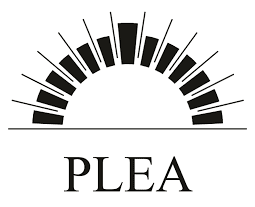This paper proposes a new heuristic to simulate and study the visual comfort aspect in the designing of Complex Fenestration Systems. The goal of the heuristic is two-folded, (i) provide useful and simple visualization tools for preliminary glare assessments of indoor spaces, (ii) reduce the computational overhead of extremely expensive annual glare simulations by reducing the number of simulations necessary in the study of glare. The work demonstrates that through a spatial and temporal sampling of annual Vertical Illuminance data it is possible to map the potential glare POVs and to find the critical hours to conduct more detailed simulations. The authors applied the proposed heuristic in a comparative study of 3 different fenestration schemes for 3 annual sky types, a typically overcast (London, UK) and clear sky (Phoenix, AZ, USA), and an intermediate sky (Oakland, CA, USA). In sum, the results of the work show that the proposed heuristic yields a high potential to be used in design procedures that currently are based on expensive glare simulations.
Assessing the Glare Potential of Complex Fenestration Systems: a Heuristic Approach Based on Spatial and Time Sampling
This entry was posted in Conference Paper. Bookmark the permalink.

